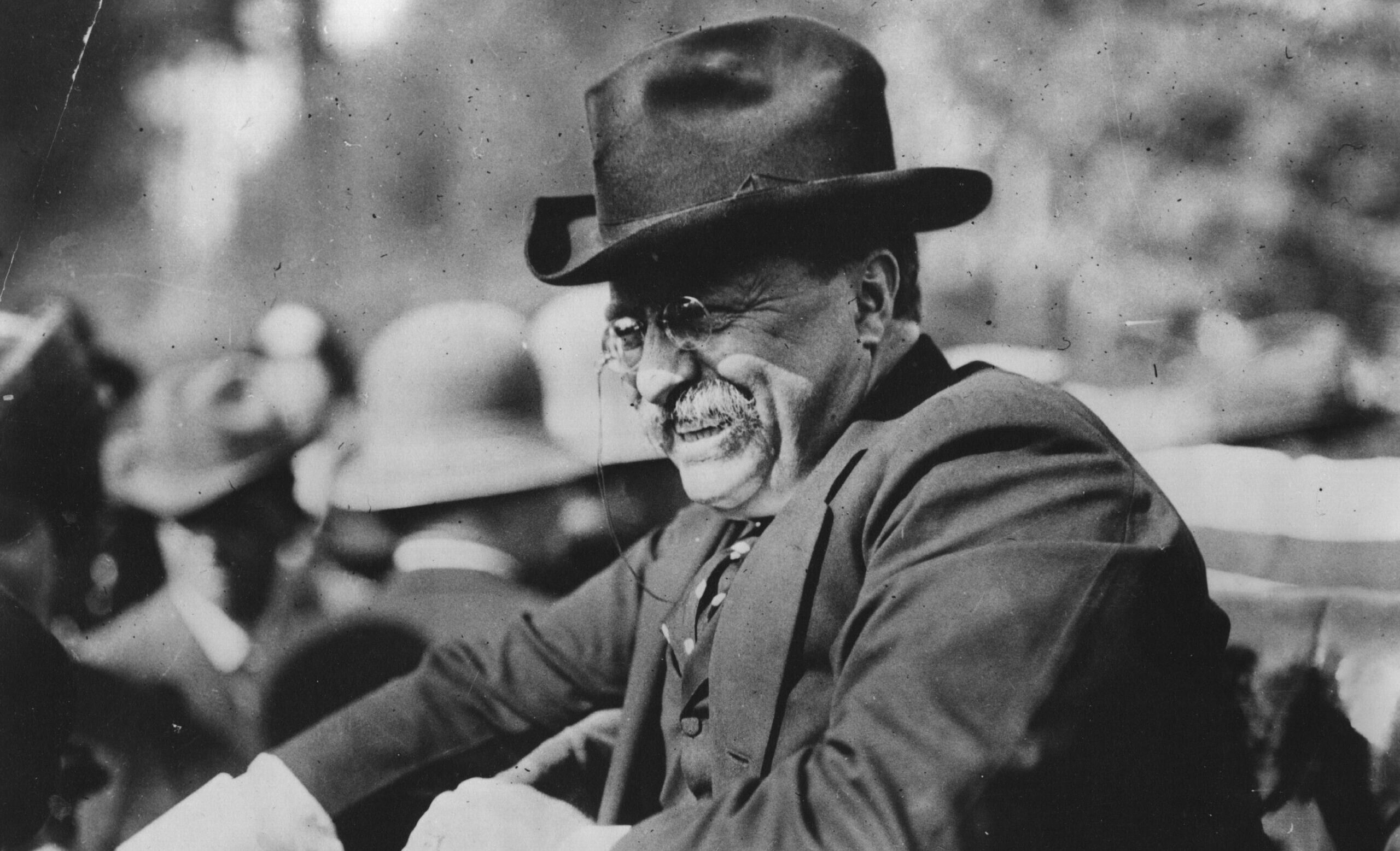American Conservatism:
Reclaiming an Intellectual Tradition
Edited by Andrew Bacevich
(Library of America, 2020)
Anthologies can be simply authoritative, containing the best that has been thought and said on a certain subject. That at least is their promise, and so it might appear with the Library of America’s American Conservatism, edited by Andrew Bacevich. A professor at Boston University, Bacevich is a distinguished historian and prolific commentator. He is also president of the Quincy Institute, one of Washington’s newer think tanks. Dedicated to foreign-policy restraint, the institute’s name evokes John Quincy Adams, who counseled Americans not to go out in search of monsters to destroy.
Unsurprisingly for a public intellectual, Bacevich is an editor with a point of view. The subtitle of this volume is Reclaiming an Intellectual Tradition. Unless that tradition of learning and sober reflection is reclaimed from the Sturm und Drang of politics, Bacevich suggests, it risks becoming a lost cause.
Bacevich outlines the American conservative tradition in his introduction. He describes an amalgam of elements including individual liberty, limited government, cultural tradition, traditional social arrangements, respect for the free market, a rejection of utopianism, and some connection perhaps to transcendence, to God, to religion. It is an unsurprising catalog, but it also deviates subtly from the three pillars of conservatism the historian George Nash analyzed in his landmark monograph, The Conservative Intellectual Movement in America since 1945. These were cultural conservatism, anticommunism, and libertarianism, a triad associated with William F. Buckley Jr., with National Review, and with Ronald Reagan, the first president to emerge from the postwar movement Buckley had helped to launch.
By reclaiming an intellectual tradition, then, Bacevich does not mean returning to the halcyon days of the Reagan administration or to Buckley’s threefold convictions. Bacevich acknowledges that the Republican Party has changed dramatically since the 1980s. Without rancor, he observes that “Donald Trump is not a conservative.” If Bacevich is right, the absence of a truly conservative party in 2020 is a challenge for his project of reclamation.
Another challenge is the legacy of neoconservatism, associated with George W. Bush more than with Reagan. Neoconservatism synthesized center-right domestic policy with a foreign policy marked by great ambition. The neoconservatives “were never genuinely conservative,” Bacevich writes, and with the exception of a short essay by Irving Kristol, the neoconservatives are nowhere to be found in American Conservatism, a bold editorial move.
Despite these exclusions, Bacevich captures the extraordinary range of conservative thought. The conservative minds in this book tend to fold American civilization into Western civilization, and vice versa. In so doing they are acutely aware of a distinctive American situation: a republic that grants individual citizens enormous freedom, including the freedom to detach themselves from the past, to hurl themselves rudderless into the future, and thus to float free from all ethical responsibility. Over the past one hundred years, American conservatives have struggled to reconcile this freedom with tradition and with order, such that American freedom is not anarchy and such that it does not somehow devour itself. The record of this struggle will make American Conservatism a standard work, though it is surely an idiosyncratic one. Bacevich’s anthology is not just a tradition reclaimed. It is a tradition molded in the image of the civilized restraint that Bacevich cherishes in domestic politics and in foreign policy alike.
American Conservatism begins—plausibly enough—with Russell Kirk. Dwelling in rural Michigan, Kirk was a stalwart defender of traditionalism, seeing himself as a latter-day disciple of Edmund Burke. “The principle conservatives in the Western world have been conscious or unconscious disciples of Burke,” Kirk insisted.
Yet Burke had the Church of England and the monarchy as the anchors of his conservatism. The principle conservatives of the American world had to reckon with what the philosopher George Santayana called “the great emptiness of America,” a void left in the wake of “a vast, seething progressive society.” Kirk was well aware of this problem. It did not lead him to give up on the prospect of a bona fide American conservatism, much as it complicated his efforts to apply British ideas to the American situation.
American Conservatism makes good on Kirk’s project by expanding the canon of American conservatives. Like Kirk, these thinkers did not deny American liberty. They tried to understand how it could be made civilized. Bacevich’s roster of conservatives presume “the Individualism of America,” in Herbert Hoover’s words. At the same time, “freedom is a need of the soul, and nothing else,” writes Whittaker Chambers. Freedom must be steadied by the soul-saving ballast of tradition and by “the truths of the inner life,” as Irving Babbitt puts it. W. H. Chamberlain makes this same case in the negative: “It will be a bad day for any country when the idea of liberty can be plausibly represented as a screen for wealth and special privilege”—for appetite, that is. For these writers, true liberty must originate in virtue. It cannot succumb to the never-ending temptations of appetite.
American Conservatism offers one elaboration after another on this idea. The enumeration of rights on paper will be meaningless unless the moral and social preconditions for these rights are firmly in place. Each of the thinkers in American Conservatism worries about the fading away of such preconditions, “the melting away of established principles of authority,” in Irving Kristol’s phrase. Writing about the faltering Roman Republic and no less nervously about the twentieth-century United States, Albert Jay Nock states that “the rights and practices of self government, which were formerly very considerable in the provinces and much more so in the municipalities, were lost by surrender rather than suppression.” Liberty lost is not necessarily liberty usurped. Unmoored, liberty can be given away.
Bacevich’s choice of essays in American Conservatism calls a truce between Thomas Jefferson’s emancipating Enlightenment and the older, more pessimistic imperatives of a Judeo-Christian civilization. The creation of an American republic was a break with the past, a novus ordo seclorum, and it was no less a continuation of political knowledge extracted from classical antiquity, balanced by the Old Testament ideal of a righteous polity. Sprawling as it is, American Conservatism follows from the singular insight “that barbarism lurk[s] as a potentiality of modern society no less than that of the Dark Ages,” as Harry Jaffa contends. This insight takes on unique meaning in the United States, the world’s paradigmatically modern society.
Whose Conservatism?
As a philosophical conversation conducted over time, American Conservatism is illuminating. “Variation is a consequence of freedom,” Santayana points out, and Bacevich shows that variation has been a hallmark of serious conservative thought in America. In the United States, conservative variation derives from the fact that the country has no organic, premodern past. It is a country born in revolution. The American republic is among the few countries globally that continues to rely on an eighteenth-century constitution. The varieties of American conservatism proceed from the ambiguities of a conservative revolution.
Helpfully, Bacevich lets this variation speak for itself. No one contributor to this volume gets the last word. Tradition is not static. Nor is reclaiming tradition merely an act of preservation. Even the most ancient tradition lives in the vividness of debate and disagreement.
Where American Conservatism falls short is in conveying the relationship between ideas and politics. Although many of the conservatives who appear in the pages of American Conservatism—from Herbert Hoover, to Whittaker Chambers, to William F. Buckley Jr., to Ronald Reagan—were leaders and arbiters of opinion within the Republican Party, Bacevich fashions a disembodied conservatism from their writings. Because the conservatism at issue is so ethereal, Bacevich is able to minimize aspects of the Republican Party and extra-party political movements that he dislikes or that do not meet his standard for conservatism. Thus are populism and interventionist foreign policy relegated to the sidelines of this six-hundred-page anthology, despite their prominence in practical politics.
Henry Adams and George Santayana and other wonderfully educated, elitist conservatives make the cut, which is reasonable for a book that embodies an intellectual tradition. Yet many of the thinkers in American Conservatism rejected elitism in ways this book leaves unexplored. Chambers modeled his thinking on the narodniks, nineteenth-century Russian populists, and sought a traditionalism and piety in the American people that he was unable to find in New York City or Washington. Buckley, joyfully elitist though he was in his personal life and manner, thought politicians like Joseph McCarthy were a necessary antidote to the left-leaning and potentially traitorous proclivities of the American elite. Not a populist in spirit, Reagan used populism to create his electoral coalition, building on Richard Nixon’s notion of a “silent majority,” a heartland of patriotic Americans ill-served by an elitist media and unaccountable government.
In light of this history, Bacevich’s declaration that Trump is not a conservative is baffling. True, Trump is unshaped by conservative thinking. As someone who shifted party allegiance throughout his life, Trump stumbled onto the themes of his surprise 2016 campaign. But his Electoral College victory, followed by his garnering of more than seventy-four million votes in 2020, demonstrate the resonance of certain themes on the right side of the political spectrum: loathing elites, celebration of a distinctive American nationalism, presentation of religious faith as embattled, skepticism toward immigration, tonalities of grievance and resentment.
Whether these themes amount to “conservatism” is debatable of course. Nevertheless, they demand consideration not just in the history of the Republican Party but also as strains within the intellectual tradition of American conservatism, which they most certainly are.
American Conservatism does shed light on one feature of the Trump administration that draws directly from the conservative intellectual tradition. It gathers together several important statements on foreign policy restraint. Trump won on this message in 2016 and did not begin any war as president, though he did increase military spending and preside over the admission of two new member states to NATO. American Conservatism includes Henry Cabot Lodge’s well-reasoned speech opposing the League of Nations, framed around the point that “our disinterestedness is of far more value to the world than our eternal meddling in every possible dispute could be.” There is also the austere wisdom of Senator Robert A. Taft’s realization that war “is almost as disastrous for the victor as for the vanquished,” a phrase that should have been set in stone and memorialized after the collapse of the Soviet Union.
Comprehensive as it is on the subject of foreign policy restraint, American Conservatism is at its most skewed on international affairs. It includes a delightfully sarcastic essay by the historian Charles Beard, skewering “world lecturing and interventionism.” But Beard was hardly a conservative. American Conservatism does not include George Kennan, a cultural conservative and an architect of the Marshall Plan and NATO. Nor does it include material on Eisenhower’s internationalism—and it was Taft whom Eisenhower pushed aside to get the Republican nomination in 1952. It does not include Henry Kissinger, who regarded a vigorous American foreign policy as crucial to the global balance of power and therefore to preserving the social order both at home and abroad.
Compared to the volume’s range on issues other than foreign policy, Bacevich’s exclusion of neoconservatism is equally dubious. James Burnham figures in American Conservatism as the main advocate of promoting American values around the world. Channeling the historian Arnold Toynbee, he was the author of the megalomaniac prediction that “Western Civilization has reached the stage in its development that calls for the creation of its Universal Empire. The technical and institutional character of Western Civilization is such that the Universal Empire of Western Civilization would necessarily be at the same time a World Empire.” A better choice here might have been an essay by Irving Kristol or Norman Podhoretz on the Cold War, or by second-generation neoconservatives like Robert Kagan and William Kristol. Neoconservatism left its mark. It continues to dominate the right-leaning think tanks, and even if it is the demon from which Trump-era conservatives are attempting to free the Republican Party, its ideas are interwoven with the conservative intellectual tradition. The argument about how restrained the United States should be has not yet been resolved.
Just in Time
American Conservatism is above all a timely book. Four years after George Nash published his pioneering history of the conservative intellectual movement, Ronald Reagan was elected. A common assumption was that writers and intellectuals were the forerunners of the Reagan era. First cultural conservatism, anticommunism, and libertarianism had to be conceptualized—and fused together—before they could be translated into policy. The ideas were what gave the policies their coherence. A generation later, the task was to maintain the conservative agenda after Reagan. George Bush Sr. did this to the diminishing satisfaction of many conservatives. Then George W. Bush shattered conservatism on the shoals of the Iraq War.
In the mayhem of his four years in office, Donald Trump dissolved this idea-driven narrative in the vortex of his personality. Perhaps he redefined American conservatism along the way. Perhaps he betrayed it. Perhaps he provided the impetus for its rediscovery. His presidential term has ended in incoherence and hence in questions. For anyone trying to think through the consequences, American Conservatism is the perfect place to start.
Michael Kimmage is a professor of history at the Catholic University of America. He is author of The Conservative Turn: Lionel Trilling, Whittaker Chambers, and the Lessons of Anti-Communism and most recently The Abandonment of the West: The History of an Idea in American Foreign Policy.













